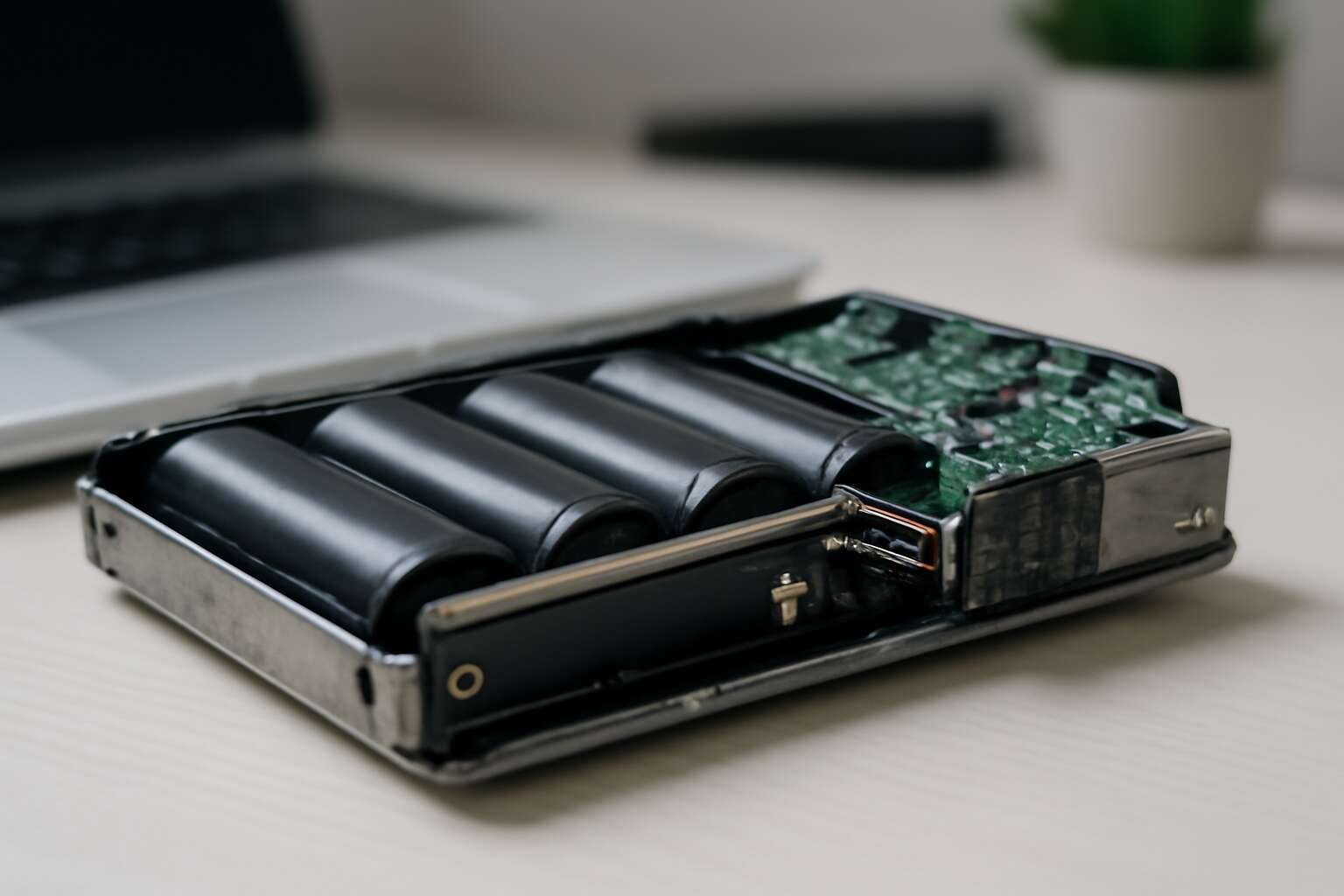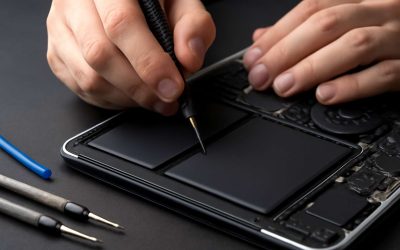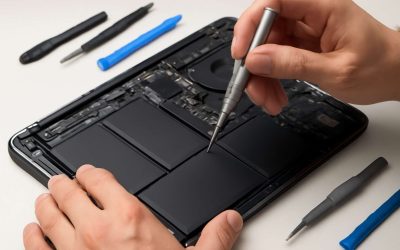Understanding Laptop Battery Scrap Value
Overview of Laptop Battery Recycling
In the intricate dance between technology’s obsolescence and environmental stewardship, understanding the true worth of laptop battery scrap becomes an essential pursuit. The *laptop battery scrap price* isn’t merely a figure; it’s a reflection of the complex interplay between raw material demand and sustainable recycling practices. As electronic waste surges globally, the real value lies beneath the surface, waiting to be uncovered by those attuned to market nuances.
Recycling laptop batteries is more than a transactional endeavour; it’s an intricate process that transforms hazardous components into valuable resources. The process involves meticulous sorting, chemical extraction, and refinement—each step contributing to the overall ecosystem of electronic waste management. When assessing the *laptop battery scrap price*, factors such as battery chemistry, age, and residual charge come into play, impacting the final valuation. Recognising these elements allows stakeholders to navigate the market with precision and foresight.
Factors Influencing Scrap Price
The true worth of laptop battery scrap fluctuates in a landscape driven by both market demand and technological evolution. Behind the seemingly straightforward *laptop battery scrap price* lies a labyrinth of factors that influence its valuation. As electronic waste proliferates, understanding these variables becomes more than a mere curiosity—it’s a vital component of responsible recycling and sustainable resource management.
At the core of these considerations is the chemistry of the battery. Lithium-ion batteries, for instance, contain precious metals like cobalt and nickel, whose market prices directly sway the *laptop battery scrap price*. Additionally, the age and residual charge of a battery can significantly impact its value, as newer or fully charged units typically contain higher concentrations of recoverable materials.
To grasp the full spectrum of influences, one must consider the composition and condition of the battery.
- The presence of hazardous components that require careful handling
- The purity of extracted materials after chemical processing
- The current market prices of raw materials used in manufacturing
These elements weave together, creating a complex tapestry that determines whether a batch of laptop battery scrap fetches a lucrative price or a modest return. Ultimately, the *laptop battery scrap price* embodies a nuanced interplay—an alchemy of raw material value, technological attributes, and market forces that only those attuned to industry shifts can truly decipher.
Types of Laptop Batteries and Their Resale Value
In the intricate dance of electronic waste valuation, understanding the nuances behind the *laptop battery scrap price* reveals a landscape far more layered than mere market fluctuations. Different types of laptop batteries possess distinct intrinsic worths, shaped by their chemistry and residual value. For instance, lithium-ion batteries, prevalent in most portable devices, contain precious metals such as cobalt, nickel, and lithium—elements whose market prices directly influence the scrap value.
When assessing the resale value of various laptop batteries, recognising their composition becomes crucial. Here are some key distinctions:
- Standard lithium-ion batteries from older laptops tend to have a lower *laptop battery scrap price* due to diminished recoverable materials.
- High-capacity, newer batteries often contain a richer concentration of valuable metals, raising their worth.
- Battery condition—whether it retains a residual charge or shows signs of deterioration—also significantly impacts its scrap value.
Ultimately, the *laptop battery scrap price* hinges on these complex variables, transforming what might seem like simple recycling into a sophisticated valuation process that intertwines material science, market trends, and technological innovation.
Market Trends and Current Pricing for Laptop Battery Scrap
Global and Local Market Overview
In the bustling world of electronic recycling, the laptop battery scrap price has become a surprisingly dynamic figure—shifting faster than you can say “battery replacement”! Globally, the market is experiencing a surge in demand driven by the green energy push and rising awareness of sustainable practices. Countries with strict environmental policies, like Germany and Japan, are leading the charge, pushing local prices higher. Meanwhile, in regions where electronic waste management remains lax, prices tend to fluctuate wildly, almost like a rollercoaster ride for recyclers.
Current pricing for laptop battery scrap varies significantly depending on factors such as battery type, chemical composition, and regional regulations. In some markets, the price per kilogram can range from as low as $2 to over $10, reflecting the varying levels of lithium content and processing costs. Here’s a quick snapshot of the global landscape:
- High-demand markets like North America and Europe see premium prices due to stricter environmental standards.
- Emerging economies often offer lower prices, but this is shifting as infrastructure improves.
- Regional policies against improper disposal are boosting local scrap prices, making recycling more profitable than ever.
As the world’s appetite for sustainable electronics grows, so too does the importance of understanding the fluctuating laptop battery scrap price. Staying ahead in this market requires sharp insight into current trends, regional variations, and the intricate dance of supply and demand that influences every dollar and cent in the recycling ecosystem.
Recent Price Fluctuations
In the ever-evolving landscape of electronic recycling, the laptop battery scrap price has become a fascinating barometer of global supply and demand. Recent fluctuations reveal a market that’s as unpredictable as a caffeinated squirrel—surging one moment, plunging the next. This volatility is driven by a cocktail of factors, from technological advancements to geopolitical tensions, making it a captivating arena for recyclers and investors alike.
Particularly notable are recent price trends that underscore the influence of regional policies and resource scarcity. For example, high-demand markets like North America and Europe continue to push the laptop battery scrap price upward, motivated by stricter environmental standards and an increasing focus on sustainable disposal. Conversely, in emerging economies, prices remain subdued, yet they are gradually ascending as infrastructure develops and awareness deepens.
- Shifts in lithium content within batteries
- Changes in regional environmental regulations
<li Fluctuations in processing costs
These elements collectively craft a landscape where the laptop battery scrap price is anything but static, reflecting the complex dance of innovation, regulation, and environmental consciousness that defines our modern age. As markets tighten and loosen, understanding these recent price fluctuations becomes essential for anyone eager to navigate the lucrative world of electronic waste recycling with finesse and a dash of wit.
Impact of Technological Advancements
Technological advancements continue to reshape the landscape of laptop battery scrap price, with innovations in battery chemistry and design playing a pivotal role. As manufacturers develop more efficient, longer-lasting batteries, the composition of scrap batteries evolves, impacting their intrinsic value. This technological progress often results in a fluctuating market, where the lithium content and recyclable components vary, influencing the overall scrap price.
Moreover, shifts in regional policies concerning environmental standards significantly sway market trends. Stricter regulations in North America and Europe tend to elevate the laptop battery scrap price, driven by the demand for cleaner, more sustainable disposal methods. Conversely, in emerging markets, the price outlook remains cautious but shows signs of upward movement as infrastructure improves and awareness about battery recycling deepens.
In essence, the ongoing interplay between technological breakthroughs and regulatory frameworks keeps the laptop battery scrap price in a state of constant flux. Understanding these dynamics is crucial for recyclers and investors aiming to navigate this complex, ever-changing market landscape.
How to Determine the Price of Laptop Battery Scrap
Analyzing Battery Types and Composition
Determining the laptop battery scrap price isn’t just about flipping a switch and waiting for the cash to roll in; it’s a nuanced dance with the battery’s type and internal composition. Different batteries—be it lithium-ion, nickel-metal hydride, or lithium-polymer—each have unique values based on their chemical makeup and the precious metals they contain. For example, lithium-ion batteries tend to fetch a higher scrap price thanks to their lithium and cobalt content, which are gold mines in the recycling world.
To accurately assess the scrap value, it’s vital to analyse the battery’s composition—knowing what metals are present can make all the difference. Here’s a quick rundown:
- Identify the battery type (e.g., lithium-ion, nickel-metal hydride)
- Check for the presence of rare metals like cobalt, nickel, or lithium
- Understand the purity and condition of the metals inside
By understanding these factors, you’ll have a clearer picture of how the laptop battery scrap price might fluctuate, ensuring you’re not leaving money on the table—or worse, undervaluing your precious scrap!
Assessing Battery Condition and Usability
Determining the laptop battery scrap price is often a game of subtle nuances and keen inspection. The condition and usability of a battery can dramatically influence its worth; a seemingly worn-out unit might still contain valuable materials worth extracting. It’s essential to assess whether the battery retains any capacity or if it’s entirely depleted, as this impacts its overall value.
To gauge the true potential of your scrap, consider examining the internal health of the battery. If the battery shows signs of corrosion or damage, its scrap value may plummet. Conversely, batteries in relatively good shape, with minimal swelling or leakage, tend to fetch a higher price. An easy way to evaluate usability is by checking if the battery can still be charged or hold a charge — a vital indicator of its residual worth.
Understanding these aspects ensures that you accurately appraise your laptop battery scrap price, maximising returns and avoiding undervaluation. Remember, a detailed inspection often reveals hidden metals or components that can significantly sway the final valuation. The secret lies in the meticulous evaluation of each battery’s condition and potential for recycling.
Pricing Methods Used by Scrap Dealers
Understanding how to determine the laptop battery scrap price requires insight into the valuation methods employed by scrap dealers. These professionals often rely on a combination of market trends, metal content, and the battery’s physical condition to arrive at a fair estimate. Unlike simple weight-based pricing, many scrap dealers use a nuanced approach that considers the specific composition of lithium-ion cells and other valuable metals embedded within the battery.
Typically, the pricing methods used by scrap dealers include:
- Assessment of metal purity and concentration
- Current market rates for recyclable metals like lithium, cobalt, and nickel
- Condition of the battery — whether it’s intact, damaged, or degraded
By analysing these factors, sellers can better understand how their laptop battery scrap price is calculated, ensuring transparency and maximising returns. Recognising the intricacies of these valuation methods is crucial, especially in an industry where fluctuating metal prices can significantly influence the final payout. It’s this delicate balance of material worth and market dynamics that makes the process both a science and an art, revealing the true value hidden within each battery’s metallic heart.
Best Practices for Selling Laptop Battery Scrap
Preparing Your Scrap for Sale
When it comes to selling laptop battery scrap, preparation is everything. A well-organised and clean scrap batch not only attracts better offers but also ensures a smoother transaction. Before approaching buyers, carefully separate the batteries based on their type and condition. This step helps in accurately assessing the potential value of your scrap and avoids unnecessary disputes. Remember, the laptop battery scrap price fluctuates depending on the purity and chemical composition, so presenting a clear, sorted batch can significantly boost your earnings.
To optimise your sale, consider creating a detailed inventory of your laptop battery scrap. This allows you to communicate effectively with scrap dealers and negotiate a fair price, especially if you understand the current market trends. Additionally, ensure that the batteries are free from excessive corrosion or damage, as these factors can lower the overall laptop battery scrap price. When ready, present your scrap in a manner that highlights its quality, and be prepared to answer questions about its origin and condition.
For a seamless selling experience, follow these steps:
- Sort batteries by type and condition.
- Remove any hazardous materials or leaks.
- Clean the batteries to remove dirt and corrosion.
- Document the quantity and types of batteries available.
- Research current market prices for laptop battery scrap to set realistic expectations.
By adhering to these best practices, you enhance your chances of fetching the best possible laptop battery scrap price, turning what might seem like waste into a profitable commodity!
Choosing Reliable Scrap Buyers
Choosing a reliable scrap buyer can make all the difference when it comes to fetching the best laptop battery scrap price. A trustworthy dealer not only offers fair valuations but also ensures transparency and safety throughout the transaction. It’s essential to scrutinise potential buyers—look for those with established reputations and positive reviews within the recycling community.
To streamline your decision-making process, consider asking the following questions: Does the buyer comply with environmental regulations? Do they offer clear pricing methods? Are they transparent about how they assess battery condition and composition?
- Verify credentials and licensing to avoid scams.
- Request references or testimonials from previous sellers.
- Ensure they adhere to environmentally friendly disposal practices.
- Compare quotes from multiple buyers to understand the current market rate for your laptop battery scrap price.
By aligning with a reputable buyer, you not only maximise your earnings but also contribute to responsible recycling, turning what seems like waste into a valuable resource.
Negotiation Tips to Maximize Price
Negotiating the best laptop battery scrap price demands a nuanced approach that balances assertiveness with informed discernment. When entering discussions with scrap buyers, remember that confidence rooted in knowledge can significantly influence the outcome. It’s wise to highlight your understanding of current market rates and the specific condition of your battery, which can serve as leverage to secure a fair deal.
Effective negotiation often hinges on patience and clarity. Don’t be afraid to probe deeper—ask for detailed explanations of how the buyer assesses battery composition and determines pricing. This transparency not only fosters trust but also allows you to identify opportunities for better offers.
A practical tip is to prepare multiple quotes beforehand, enabling you to compare and recognise genuine value for your laptop battery scrap price. An open dialogue, coupled with a clear grasp of market trends, can transform a simple transaction into a mutually advantageous exchange, ensuring you maximise earnings while contributing to responsible recycling.
Legal and Environmental Considerations
Proper Disposal and Recycling Regulations
Amid the pursuit of sustainable resource management, understanding the legal and environmental considerations surrounding laptop battery scrap price is paramount. Improper disposal not only jeopardises ecosystems but also exposes individuals and businesses to hefty penalties. Governments worldwide have established strict recycling regulations to ensure that hazardous materials within batteries are handled responsibly, reflecting a collective commitment to environmental stewardship.
Recycling regulations often mandate that laptop batteries be disposed of through certified channels, preventing harmful substances like lithium and cobalt from contaminating soil and water sources. Failure to comply can lead to significant legal repercussions, including fines or sanctions. To navigate this complex landscape, many scrap dealers adhere to a set of best practices, such as:
- Segregating batteries based on type and condition
- Documenting disposal and recycling processes meticulously
- Partnering only with certified recycling centres
By respecting these legal frameworks, stakeholders not only safeguard the environment but also preserve the integrity of the laptop battery scrap price. Proper disposal and adherence to recycling regulations are essential in transforming electronic waste into valuable resources, reinforcing the delicate balance between economic opportunity and ecological responsibility.
Safety Precautions When Handling Battery Scrap
Handling laptop battery scrap with care is not merely a matter of safety; it’s a commitment to safeguarding our fragile environment. The hazardous materials within these batteries—such as lithium, cobalt, and nickel—demand meticulous precautions during collection and processing. A single misstep can lead to disastrous consequences, contaminating soil and water sources and endangering ecosystems. That’s why strict safety protocols must be observed when dealing with battery scrap, ensuring that all personnel are equipped with appropriate protective gear and trained in handling procedures.
To minimise risks, it’s advisable to follow a structured approach. For instance, segregate batteries based on type and condition, which helps streamline recycling processes and prevents dangerous chemical interactions. Additionally, partnering exclusively with certified recycling centres ensures that the laptop battery scrap price remains fair and compliant with environmental standards. Remember, responsible handling not only fortifies the safety of everyone involved but also influences the value of your scrap in the marketplace.
- Use insulated gloves and eye protection at all times.
- Store batteries in well-ventilated, dedicated containers.
- Avoid puncturing or dismantling batteries unless trained and equipped to do so.
By maintaining these safety precautions, stakeholders uphold a high standard of environmental integrity, which in turn sustains the favourable laptop battery scrap price that the market offers. The delicate act of balancing economic opportunity with ecological responsibility begins with respect for the materials we handle and the regulations we follow—an ongoing journey towards a greener, cleaner future.
Environmental Impact and Sustainability
Environmental considerations are at the core of responsible laptop battery scrap handling. These batteries contain hazardous materials like lithium and cobalt, which pose significant risks if not managed properly. Improper disposal can lead to contamination of soil and water, threatening ecosystems and public health. That’s why adherence to strict environmental regulations isn’t just a legal requirement; it’s a moral obligation. The ongoing push for sustainability has pushed the market to value eco-friendly practices, directly impacting the laptop battery scrap price.
To minimise environmental harm, stakeholders must follow proper recycling protocols and partner with certified centres. These facilities ensure that toxic substances are safely extracted and responsibly processed, which in turn helps stabilise the scrap market. Furthermore, many regions now enforce compliance through detailed guidelines, such as segregation based on battery type and condition. This not only safeguards the environment but also influences the overall worth of your scrap in the marketplace, making transparency and regulation adherence more critical than ever.
Resources and Tools for Interested Sellers
Price Monitoring Websites
In the dynamic realm of laptop battery scrap price, staying ahead demands more than mere intuition; it calls for the vigilant eye of resourceful tools and dedicated websites. These digital compasses illuminate the fluctuating tides of market value, offering sellers real-time insights that transform uncertainty into opportunity. When prices shift like the wind, having access to reliable monitoring platforms can make all the difference between a profitable sale and a missed chance.
For those eager to navigate this complex landscape, a curated selection of resources can serve as invaluable allies. Price monitoring websites, in particular, stand out as beacons of clarity amidst the chaos. They aggregate data from diverse markets, presenting a panoramic view of the current laptop battery scrap price and forecasting future trends with uncanny precision.
Some of the most trusted platforms include:
- Global Scrap Market Indexes
- Regional Electronics Recycling Portals
- Specialist Battery Scrap Price Trackers
These tools empower sellers to compare prices, track historical fluctuations, and strategise their sales with confidence. In a marketplace where every cent counts, leveraging such online resources transforms a simple transaction into a calculated victory, ensuring that the true worth of your laptop battery scrap is realised in full bloom.
Local Scrap Yards and Recycling Centers
For those venturing into the realm of laptop battery scrap price, understanding where to source reliable resources can be transformative. Local scrap yards and recycling centres are often the unsung heroes of this intricate marketplace, offering a tangible connection to the fluctuating currents of market value. These centres act as repositories of opportunity, where seasoned traders and newcomers alike can gauge the worth of their battery scrap through direct interaction and observation.
Engaging with local scrap yards provides a strategic vantage point, especially when combined with insight into regional price trends. Many of these centres maintain updated pricing boards or digital records, revealing the latest laptop battery scrap price and allowing sellers to compare against broader market data. This proximity to the source often translates into better negotiation leverage and an authentic sense of current market sentiment.
To streamline your dealings, here’s a quick glance at the typical process:
- Visit nearby recycling centres or scrap yards known for handling electronic waste.
- Request an evaluation of your battery scrap, focusing on condition and type.
- Compare the offered price against local and online market estimates.
- Negotiate confidently, armed with real-time knowledge of the current laptop battery scrap price.
Utilising these resources not only enhances your understanding of the market but also ensures that every transaction reflects the true worth of your laptop battery scrap. In this dynamic trade, local scrap yards are more than mere stopovers—they are vital gateways to maximising profit and appreciating the true value of your electronic waste.
Industry Reports and Market Updates
In the ever-shifting mosaic of electronic waste, staying attuned to industry reports and market updates becomes a compass for savvy sellers. These resources illuminate the fluctuating currents of the laptop battery scrap price, transforming raw data into a beacon of strategic insight. Industry reports, often published by reputable market analysis firms, offer a panoramic view of global trends, regional disparities, and emerging opportunities. They serve as an invaluable tool, allowing sellers to anticipate price movements before they ripple through the market.
Moreover, market updates, whether delivered through specialised websites or financial news outlets, provide real-time snapshots of the current landscape. For those eager to harness the full potential of their battery scrap, these updates are a treasure trove of vital information. Some platforms even feature historical charts and predictive analytics, turning the act of selling into a calculated dance of timing and value.
By integrating these industry reports and market updates into your strategy, you elevate your understanding beyond the superficial. You gain the power to navigate the labyrinth of the laptop battery scrap price with confidence and finesse, turning seemingly modest scrap into a meticulously valued commodity.




0 Comments